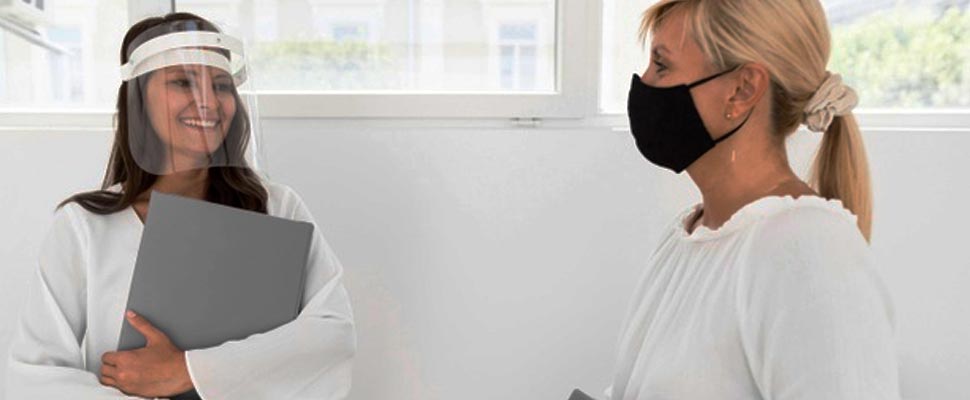Face shields vs. face masks: Can they be alternatives or should they go together?
With COVID-19 still spreading throughout the community, the Center for Disease Control and Prevention (CDC) have recommended that people wear face coverings when in public.

Ethan Thomas
Listen to this article
This has seen people opt for both face masks and face shields when they leave the house, but should these be seen as alternatives or should they instead be worn together?
We take the chance to go ahead and explore each type of face covering. We’ve listed the pros and cons of each, talked about which is more effective and wrapped up with whether they can in fact be worn together in a safe and effective manner.
Face masks at a glance
Face masks are otherwise known as surgical masks and are designed to prevent bacteria shed in liquid droplets, from reaching or escaping from your mouth and nose.
Pros:
-
Provides a simple barrier between your mouth and nose and airborne respiratory droplets.
-
Lowers the risk for others when you cough, sneeze and talk.
-
Doesn’t affect your vision as your eyes are clear and easily visible to others.
Cons:
-
Offers zero eye protection against respiratory droplets.
Face shields at a glance
Face shields on the other hand, are items of personal protective equipment (pretty common in hospital settings now with healthcare workers) that aim to protect your entire face from potentially infectious materials.
Pros:
-
Provides greater facial protection from respiratory droplets when they’re projected front-on.
-
Gives added protection for your eyes.
-
Allows the entirety of your facial expressions to still be used when communicating with others.
Cons:
-
Has gaps at the bottom and sides of the shield, only ensuring protection from the front
Which is more effective?
With such a wide array of materials, styles and functions face coverings are worn for within the community, studying which is more effective has become a nightmare for scientists. The lack of a control makes answering this question in a definitive fashion all but impossible.
Also read: Nitric oxide a possible treatment for COVID-19
However, according to the World Health Organisation, the most important thing to remember is that wearing a mask or colourful facemask alternative, is almost always better for yourself and those around you, than wearing nothing at all.
This is because they always, at the very least, limit the spread of airborne droplets that carry COVID-19.
When social distancing is not possible, such as on public transport, shopping centres or packed medical center waiting rooms, wearing some sort of mask will be beneficial to everyone in the room.
Can they be worn together?
There’s no doubt that when a properly fitted face mask is worn underneath a face shield, greater protection is offered. However, in a daily setting where risk of exposure during social distancing is low, it’s unnecessary to wear both together.
That’s without even discussing the impracticalities of ensuring both are correctly fitted and adjusted without touching your face. It’s always worth remembering that face masks aren’t designed to be impenetrable barriers, but instead designed to simply reduce the spread of COVID-19. A job either will do well.




